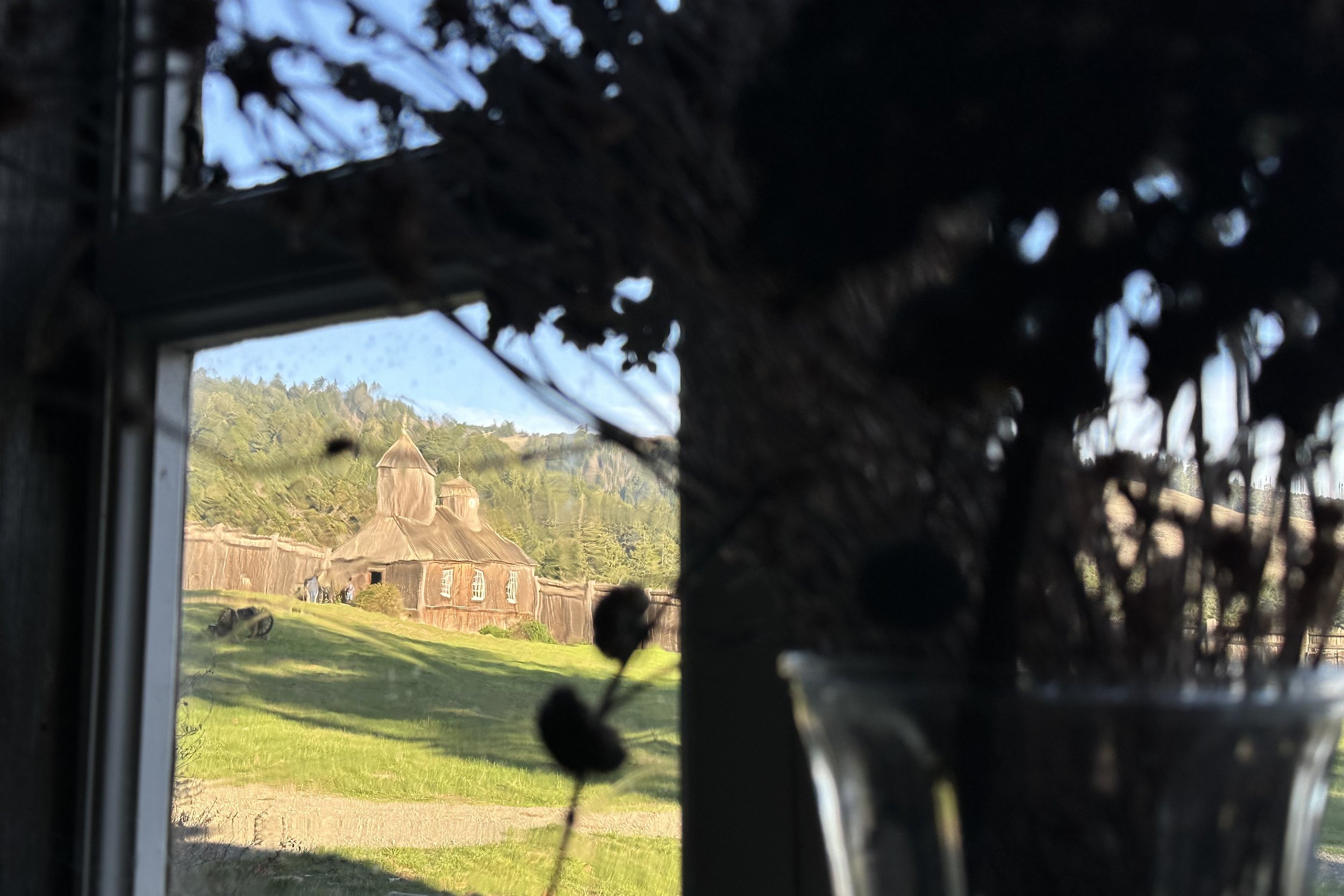
Fort Ross State Historic Park
On California’s Pacific Coast Highway (“The 1”) tucked away at the top of a bend above Fort Ross Creek lies the incredibly well preserved historical Russian Fort known as Fort Ross. Fort Ross State Historic Park has a visitor center, exhibits, a gift shop, library, a Russian Cemetery, the remains and restorations of the Russian Fort & many settlement buildings, and a commanding view of the Pacific Ocean and the surrounding coastal landscape. You may hike, fish, and camp here at the old Fort.
In reality, the only surviving original structure at Fort Ross is the Rotchev House which was built in 1836. The first Russian Orthodox chapel south of Alaska, the stockade, the first manager’s home, the official’s quarters, a fur warehouse, and two blockhouses, as well as a few other structures have all been reconstructed.
Fort Ross once held Russian sailers, fisherman, hunters, and settlers (as well as their Alaskan Native Alutiq allies) beginning in 1812 when the Russian-American Company built it. Now it’s a lovely stop as you travel the California coast. My wife and I even saw whales breaching out to sea in November! While gorgeous, it can be a harsh landscape with winter storms bearing gale force winds, 44 inches of rainfall a year, and layers of thick fog. Surrounding the Fort are steep cliffs, a cove with still water, coniferous forests, grasslands, and even old growth Redwood forests!
The Park was established in 1906, making it one of the first in the state, and it preserves this awesome corner of American colonialism by those other forgotten explorers. Western European Anglos weren’t the only peoples to lay claim to what Manifest Destiny eventually conquered (as my Spanish in the American Southwest historical podcast series covers).
Before the Russians built the Fort though, the Kashaya band of Pomo people lived in the area with their famous baskets and they gathered, fished, hunted, and harvested sea salt for trade. Their famous baskets can even be found in museums as far off as St. Petersburg in Russia (The Kunstkamera or Great Museum).
Beginning in the mid 1700s though, Russian peoples along the western coast of that large Empire began sea-faring for fur-bearing marine mammals. This would lead to the 1784 settlement on Kodiak Island of Alaska built by Gregory Shelikov. 15 years later, in 1799 Tsar Paul would grant this new group of Russian Capitalistic Explorers known as the Russian-American Company full monopoly on all fur expeditions in the New World. Eventually the Russian-American Company had settlements from Sitka, Alaska to the island of Hawaii and they’d hunt from that far northern province all the way down to Baja California, killing every sea otter and sea lion they could find.
To facilitate easier hunting though, in 1809 the Russian-American Company’s Chief assistant, Ivan Kuskov was sent to find a permanent settlement spot somewhere on the coast of California. He would eventually choose this spot, north of Bodega Bay and north enough away from the Spaniards to not be a problem. In 1812, he’d return to this spot with 25 Russians and 80 Alaska natives to begin building the settlement. The name Fort Ross is named after Imperial Russia herself, or Rossiia.
Much of what they grew was actually sent to feed the Russian settlements in Alaska and a lot of what they caught was sent there as well. Surprisingly, by this time, they had hunted out all of the marine mammals in that northern area.
At the fort they built an impressive wall and hauled up quite the amount of cannons and built a well stocked armory. They didn’t want to fight the Spaniards or local American Indians so they built an imposing warning to those outside the walls. Although, eventually, settlements for the mixed populations and lower class Russians would pop up nearby and around the Fort.
The first ever ship built in California was actually built at the Fort as well. That ship was called the Rumiantsev and it was completed in 1818. Only two years later though, by 1820, the marine mammal population as far south as California… was gone. Russian leaders then put halts on the hunting of these creatures which were actually the first such laws ever for the Pacific Ocean. The Russians were also big into science and studying the area. From the California Parks pamphlet: “Russians contributed greatly to Claifornia’s scientific knowledge. Their voyages expanded the study of geography, cartography, ethnography, geology, meteorology, hydrography, botany, and biology. results gained from Russian voyages brought about many early charts of California’s north coast.”
By 1841, the Russian-American Company sold the land to John Sutter (of Sutter’s Mill fame). Eventually it was sold to a George W Call who would built a huge ranch and ship out a bunch of goods that helped build the west. The Calls actually owned most of the ranch property until 1973.














